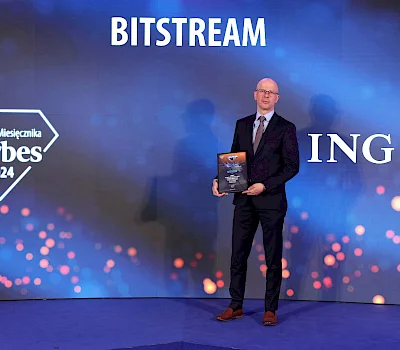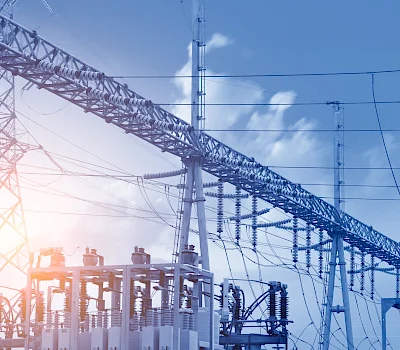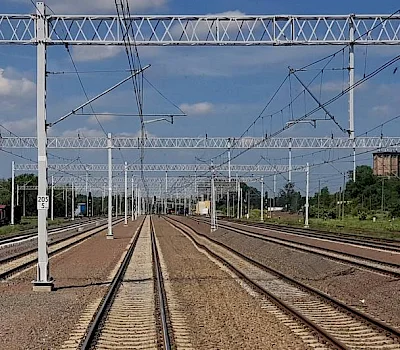Why implement the IEC 61850 standard on a substation? Possibilities and benefits of the standard
The power industry, as a critical infrastructure branch, is an extremely demanding sector for suppliers. The ever-increasing demand for electricity and the ongoing integration of centralized networks of non-renewable energy sources (e.g. combined heat and power plants) and distributed renewable energy sources (e.g. wind farms and photovoltaics) pose a challenge to maintaining the stability and reliability of the entire network and the quality of the delivered power. This is what IEC 61850 addresses – a standard that, despite the power industry’s caution about novelty, is rapidly gaining popularity and is increasingly required for new and upgraded high-voltage substations.
Brief information about IEC 61850
IEC 61850 is an international norm for the standardization of substation automation. It defines (among other things) communication protocols to ensure communication between devices in the substation, such as protection, control and measurement devices, as well as IEDs (Intelligent Electronic Devices).
For more information about the standard, please see the articles “Introduction to IEC 61850: A Beginner’s Guide”.
Why implement IEC 61850?
IEC 61850 is a solution that offers a lot of benefits, both for stations that are newly built and for those that are outdated and due for modernization. The differences between the initiatives are huge, but the advantages of implementing the standard overlap for both cases.
Lower cabling costs
In contrast to the older solution, the IEC 61850-compliant communication in the station is based on Ethernet, and the communication of station components between each other and levels is carried out over fiber optic cables. The solution allows signals to be transmitted over a single Ethernet cable, instead of sending each signal over a separate copper cable. This feature dramatically reduces the number and length of cables required to date, resulting in significant cost savings.
It is also worth noting that fiber optic cable is much cheaper than typical copper cable. This is especially important for upgrades, where the investment budget is usually stretched to the minimum. For skeptics of the argument: The price of a few dozen meters of cable may not make a difference, but with kilometers, the price per meter matters a lot. Depending on the size of the object, this solution can give up to 40% savings on the value of the installation itself[i]
Easier network-level configuration
The convenience introduced by the standard is the minimization of manual configuration of devices. Thanks to an advanced degree of automation, it significantly reduces the chance of occurrence of possible (and unfortunately expensive) errors and their corrections.
Despite this improvement, configuration is still a complex process, and getting it right is critical to the stability of the entire network. Hence with help come client applications supporting not only network implementation, but also its further maintenance. Our company offers system supporting BTNET management. With such an application, maintenance of the entire facility becomes even simpler, e.g. network configuration can come down to downloading a list of points directly from the device.
Lower maintenance and operating costs
In addition to the immediate benefits, IEC 61850 also offers long-term savings in total cost. The technology that the standard offers the potential to reduce net energy costs. With advanced monitoring options, information such as phase angle and voltage stability can be used to determine real-time network conditions, such as calculating dynamic network loading or revealing more capacity than model-based limits. This allows you to observe and make changes that can translate realistically into business economics.
IEC 61850 also indirectly addresses another issue – the problem of hiring qualified staff. The work of field teams and engineers is essential to ensure continuity of power distribution, yet the market is experiencing a shortage of technicians, which is strongly felt by power utilities. Multi-level automation introduced by the standard solves this problem – minimizing the need for manual operation of elements translates into lower staff requirements. An additional benefit of this solution, resulting indirectly from easier operation and maintenance of the system, is the reduction of expenses on maintenance of field teams.
Reliability of data transmission
By controlling the availability of the communication channel and preventive blocking of low priority packets, the network, which is heavily trafficked, is not overloaded with less important data. Additionally, the implemented data integrity check and connection redundancy option ensure efficient and reliable transmission.
Interoperability
Allowing devices from different manufacturers to work together was a new feature introduced with the standard. This is a significant difference from the old school of networking in the power industry, where conditions were dictated by the limitations of a single manufacturer. Such a condition simplified the substation modernization process, which often involves the cooperation of already existing elements with new automation devices.
Greater control and safety
IEC 61850 has an invaluable advantage for the critical power sector that older technology does not – real-time control. The feature gives you the ability to react immediately to unwanted events, the consequences of which can be costly or (worse) catastrophic. And this is not an exaggeration, after all, over the past 20 years we have already seen the effects of a blackout several times in different parts of the world… The option of real-time network monitoring is possible thanks to high-speed recording of measurements and system status, provided by the Phasor Measurement Unit (PMU) and Supervisory Control And Data Acquisition (SCADA) system. SCADA can report the network status every 4 seconds, while PMUs can report up to 60 measurements per second, thus providing double supervision – if SCADA fails to catch an event, PMUs will. And this, in turn, guarantees the best quality of control and safety.
In addition to protecting the network from possible failure, the technology used in the standard helps to identify the existing one. No other standard offers such assistance. With the use of Synchronous Ethernet and precisely defined time of the event, it is possible to locate the place of the power line failure with an accuracy of up to 10m. Such precise information ensures the fastest possible arrival of the field team on the scene and the removal of defects.
Easier and cheaper network expansion
Using the same network technology throughout the utility, makes it easier to integrate the substation into the utility and significantly reduces the cost of the entire operation. In turn, the mere addition of a new device is accomplished without the need to reconfigure the device, because with the IEC 61850 standard, devices do not need to be configured to share data. All of this simplifies the designer’s task of integrating the network, plus the reduced number of wires between devices solves the common problem of excess wires in the cable tray.
Increased resistance of cables
By using fiber optics, the circuit gains a new level of protection. And this is thanks to galvanic isolation, which performs two important tasks. First, it protects the circuit from damage caused by potential difference. Second, it protects the signal from distortions caused by electromagnetic interference or coupling. Without such insulation, measurements performed may give incorrect results, and data transmission may be difficult or completely impossible.
Summary
The globally growing popularity of IEC 61850 is a signal to the industry of change to come, and for good reason, it is the direction in which major utilities are heading. The question that needs to be asked about mandatory implementation is not “Will IEC 61850 be required?” but “When will IEC 61850 be required?” The continuous development of the standard and the enormous benefits that its implementation brings mean that making IEC 61850 mandatory on substations is only a matter of time.










